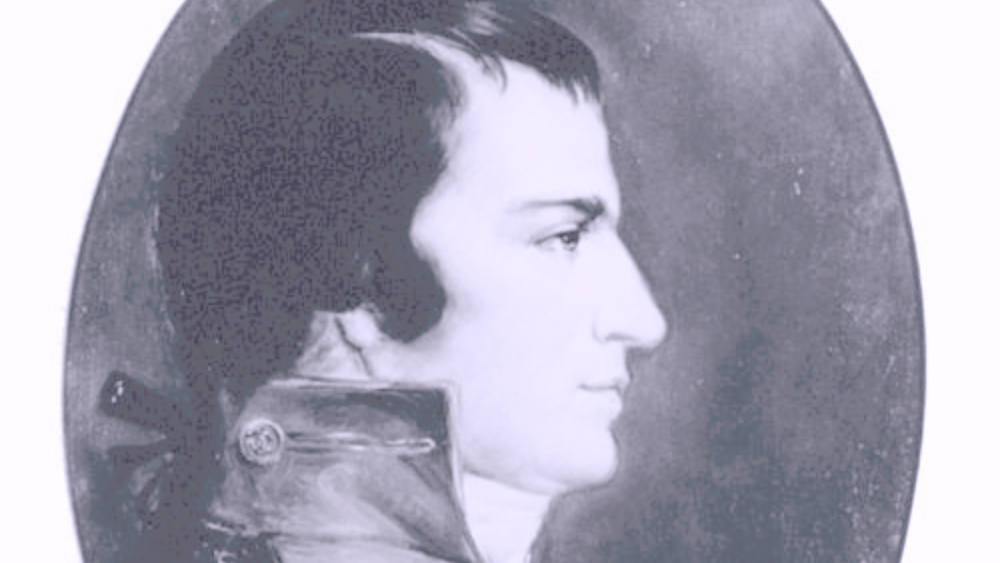The United States Marine Corps proudly showcases tales of valor, sacrifice, and leadership. Yet, like much of America’s past, it also has its share of injustices, especially when it comes to race. One such moment occurred under the leadership of William Ward Burrows, the second Commandant of the U.S. Marine Corps, who enforced a policy that barred Black and mixed-race individuals from enlisting. This policy, though often overlooked, sheds light on the racial dynamics of the early military and the broader societal attitudes of the time.
The Man Behind the Policy: William Ward Burrows
In 1798, the government appointed William Ward Burrows as the Commandant of the Marine Corps when the United States was still in its infancy. As the leader of the newly structured U.S. Marine Corps, he solidified its role in national defense, established recruitment practices, and set the standards for the force.
One of the key policies implemented during his tenure was the exclusion of Black and multiracial individuals—referred to in historical records as “Blacks and Mulattoes”—from enlisting in the U.S. Marine Corps. This policy was not entirely unique to the Marines; it reflected the widespread racial discrimination present in American society and the military at large. However, Burrows’ direct enforcement of this exclusion set a precedent that lasted for many years.
The Rationale Behind the Exclusion
Multiple factors influenced Burrows’ policy, including social prejudices, military traditions, and the prevailing attitudes of the U.S. government. Some of the reasons commonly cited for excluding Black recruits included:
- The Perceived Need for a “Homogeneous” Force – The Marine Corps, being a relatively small and elite fighting force, was often seen as an extension of naval operations. Leaders like Burrows believed that racial homogeneity would maintain unit cohesion and discipline, an argument that was frequently used to justify segregation well into the 20th century.
- Fear of Slave Uprisings – The late 18th century was a time of growing unrest regarding slavery, with revolts such as the Haitian Revolution (1791-1804) striking fear into slave-owning societies. There was a general concern among white military leaders that arming Black men, even in service to the U.S., could inspire rebellion or unrest.
- Political and Social Norms of the Era – The exclusion of Black men from military service was not a stance unique to Burrows; it was in line with the racial policies of the early American government. At the time, the idea of racial superiority was deeply ingrained in the country’s legal and social structures.
A Stark Contrast: Black Soldiers in Other Military Branches
Ironically, while the U.S. Marine Corps maintained a strict exclusionary policy under Burrows, Black soldiers were actively serving in other branches of the military. During the Revolutionary War, Black men had fought alongside white soldiers in the Continental Army, and the Navy had long accepted Black sailors into its ranks, recognizing their value in seafaring roles.
The U.S. Marine Corps’ refusal to follow suit demonstrated not only its strict adherence to discriminatory policies but also its resistance to change. This resistance would continue for more than a century, with the Marine Corps being one of the last branches to fully integrate Black servicemen.
The Long-Term Impact of Burrows’ Policy
Burrows’ racial exclusion policy remained in effect long after his tenure ended. The U.S. Marine Corps maintained an unofficial ban on Black enlistment throughout most of the 19th and early 20th centuries, only formally integrating during World War II. Even then, the Corps often assigned Black Marines to non-combat roles and intensely segregated them.
The first Black recruits in the modern U.S. Marine Corps were trained separately at Montford Point, North Carolina, starting in 1942. These Marines, known as the Montford Point Marines, paved the way for future generations and helped dismantle racial barriers within the service. However, their struggle underscores the deep roots of exclusionary policies that began with leaders like Burrows.
Reckoning with History: Why It Matters Today
Understanding the policies of figures like Marine Commandant William Ward Burrows is crucial in recognizing the broader history of systemic racism in America. The U.S. military has long been an institution that both reflects and challenges societal norms. Acknowledging past injustices helps us appreciate the progress we’ve made and recognize the work we still need to do.
Today, the U.S. Marine Corps is one of the most diverse branches of the U.S. military, with service members from all racial and ethnic backgrounds. However, achieving this diversity required years of struggle and perseverance. The U.S. Marine Corps once upheld exclusionary policies that reflected the racial biases of early American society. This legacy serves as a reminder of how deeply ingrained racism was in the military and how long it took to overcome.
Conclusion: A Story of Change and Progress
William Ward Burrows’ tenure as Commandant of the Marine Corps highlights the racial inequalities that shaped America’s past. He enforced a policy that barred Black and mixed-race individuals from enlisting, reflecting the prejudices of his time. However, this policy ultimately set the stage for future generations to challenge and dismantle these barriers.
As we look back on history, it is important not just to acknowledge these darker moments but also to learn from them. The story of racial integration in the U.S. Marine Corps is ultimately one of perseverance, courage, and progress—qualities that define the very spirit of the Marines today.










